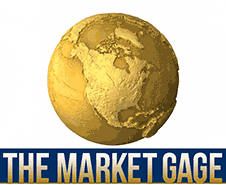
It’s official, a trade war has begun between the U.S. and China as the Trump administration has imposed tariffs on approximately $34 billion worth of Chinese products. China didn’t hesitate with retaliation measures of its own, imposing a tariff on U.S. goods at 25 percent, that was equal to Washington’s rate increase on Chinese imports.
The question remains how far will each country go and how will this tariff war affect other countries that do business with the U S and China. Right now there seems to be no end in sight as both sides seem to be going on the offensive.
Surprisingly, the equity markets seem to be taking this news in stride with the Dow Industrial average down only 70 points at the time of this report.
Even with the dollar index softening up a bit, all four Precious Metals prices are trading in negative territory this morning. Currently the dollar index is trading at 94.31 after reaching a high of 95.54 just a week or two ago. One would expect that with a declining U.S. dollar, precious metal prices would be trading higher. But with the start of a trade war with China no one seems to know what effect it will have on Precious Metal prices going forward.
Why Markets Act As They Do
If you have been following the price of Platinum in the last three weeks, you would have noticed that it traded from a high of $912 in mid-June, to a low of around $800 an ounce this week in the NYMEX most active futures contract. That’s a significant drop in just 20 days (particularly since it hit a 14-year low this past Tuesday)
Virtually a sinking ship, as all the news stories have had negative implications.
Proposed trade tariffs by the Trump administration, potentially hurting the automobile industry in a big way. Some predicting that these tariffs, could add $ 6,000 to the price of the average new car now selling at $32,000.
Also hurting the price of Platinum is the reduced amount of worldwide production
in catalytic converters as consumers are more and more changing gears to new
alternative vehicles. Diesel car registrations have declined by almost 18 percent
in the first quarter this year, adding fuel to the fire are stories like this one in Hamburg Germany. Hamburg is the first city to ban some older diesel cars
to improve air quality, setting a template for other urban cities to join in.
Earlier in the year the Chinese government suspended the production of more than 500 car models that did not meet its fuel economy standards. The latest move by Beijing to reduce emissions in the world’s largest auto market and take the lead in battling climate change.
The Chinese government has already become the world’s biggest supporter of electric cars, offering automakers numerous incentives for producing so-called new energy vehicles. Those incentives are set to decrease by 2020, to be replaced by quotas for the number of clean cars automakers must sell. That has sparked global automakers to pick up the pace in their shift towards battery powered cars.
What I found interesting during this period was the action in the futures market. If you followed the trading action, the bids were few in comparison to the outstanding offers. It seems as it became apparent that very few if any investors and traders were willing to put a bid in the market, so the shorts had their way with all the action. It wasn’t till this past Tuesday when some bids emerged and stopped the bleeding.
Every market in a downward spiral eventually finds support. But the question remains how much of an impact, will these tariffs have on the price of Platinum from here on out? Since the world is turning away from Diesel vehicles and the prospects of tariffs on automobiles coming into our country seems to be gaining momentum each day, one can expect pressure on the price to continue.
Technical levels at this juncture are indicating Platinum is a buy. Unfortunately the news seems to be controlling the market for the time being. As a trader in this market I would not be comfortable in putting on a position on either side of the Platinum market until this all gets resolved.
Have a wonderful Friday.
Disclaimer: This editorial has been prepared by Walter Pehowich of Dillon Gage Metals for information and thought-provoking purposes only and does not purport to predict or forecast actual results. This editorial opinion is not to be construed as investment advice or as a recommendation regarding any particular security, commodity or course of action. Opinions expressed herein cannot be attributable to Dillon Gage. Reasonable people may disagree about the events discussed or opinions expressed herein. In the event any of the assumptions used herein do not come to fruition, results are likely to vary substantially. It is not a solicitation or advice to make any exchange in commodities, securities or other financial instruments. No part of this editorial may be reproduced in any manner, in whole or in part, without the prior written permission of Dillon Gage Metals. Dillon Gage Metals shall not have any liability for any damages of any kind whatsoever relating to this editorial. You should consult your advisers with respect to these areas. By posting this editorial, you acknowledge, understand and accept this disclaimer.
